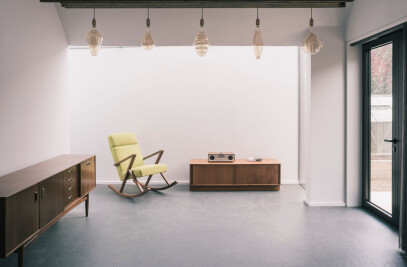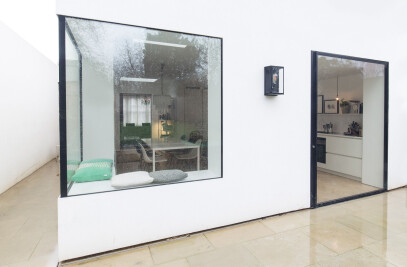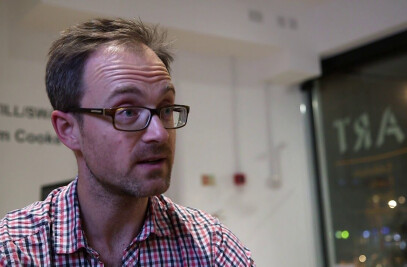The existing building we were commissioned to redesign is from the 1970s, with a history as a private family home. Unfortunately, years of neglect and weathering left it dilapidated. The main ambition of this design was to create a dwelling that provides flexible spaces and that enables different generations to live under the same roof. We approached the idea of adding any more with caution. Instead we designed a series of walled courtyard gardens, each of them accessible through various doors connecting them to the house. Over time we hope that this project, this home, will be able to evolve to survive the life spans of many future occupants.
Key products used:
The main materials in the construction of the building were external brick work, black windows, white lime paint – striking sharp edged eaves lines.
What was the brief?
We were commissioned to design the 1970s building through the vision of flexible shared living. The clients wanted to have three generations of the family to live under one roof. The main ambition of this design was to create a dwelling that provides flexible space and separation zones.
What were the key challenges?
The original building functioned poorly as the spaces were disconnected and activities happened on top of each other creating problems for all of the occupants of the house to enjoy or even use the house.
What were the solutions?
The solution looked to the landscape gardens to connect outwards in - we approached the idea of adding more with caution. Instead we designed a series of walled courtyard gardens, each of them accessible through various internal access points connecting them to the living areas of the house. The house was designed in segments, each segment connected externally to a courtyard whilst flowing internally back to the living hub.
What are the sustainability features?
We recycled as much of the existing 1970s building and reusing much of the original stock bricks. The performance of the building used sheep’s wool/boards insultation.

































